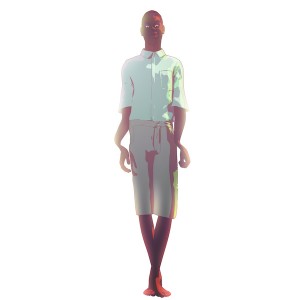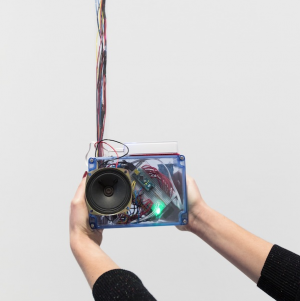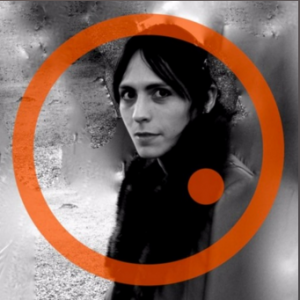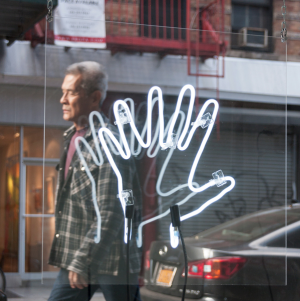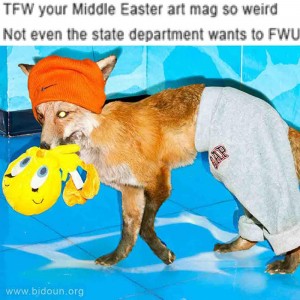For SS16 TELFAR continued to refine and expand his core practice of taking what is most utterly normal in American style — and doubling down. The result is a speculative wardrobe for the future-present: a style-fi uncanny precisely because it’s so familiar. In this video TELFAR teams up with art-collective-cum-anime-miniseries culturesport, creating an in-world advertisement in which Telfar Clemens himself plays a young designer fighting corporate backers not only over the use of his name,… [read more »]
Eckhaus Latta | A/W 2016 @ PS1

C de Castro
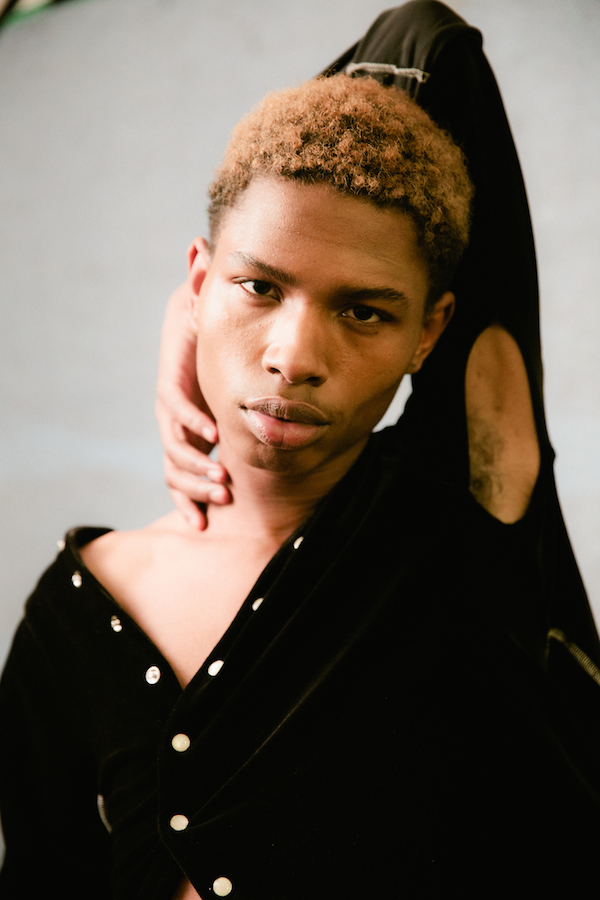
C de Castro
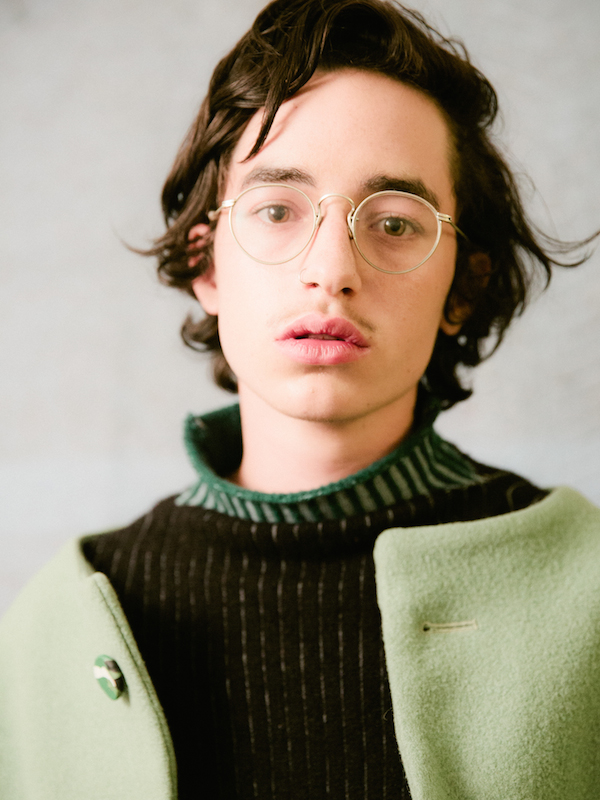
C de Castro
For Autumn / Winter 2016 Eckhaus Latta produced their most mature collection to date and did so without diluting many of their signature motifs, their close ties to the art world, and their resistance to stereotypes such as notions of an ideal body, rigid gender, race, or the fetishization of youth.
Taking place within the VW Dome in the courtyard of PS1 MoMA rather than the more traditional venues of New York Fashion Week, Eckhaus Latta’s commitment to prioritizing creativity over mass marketability has won the young brand strong support of major art institutions resulting in their inclusion in several exhibitions such as the Greater New York survey show on view at at PS1 MoMA, as well as the upcoming exhibition, Made in LA opening at the Hammer Museum in Los Angeles, on June 12th.
Eckhaus Latta continues to find success occupying a challenging niche between artistic integrity and commercial viability, evident not only by their acceptance of the art world but also by fashion industry record bearers such as Vogue, New York Times, W Magazine, Harper’s Bazaar and so on. Their success is in part due to a unique approach to making, a taste for designs far beyond the constraints of what is simply beautiful, and a deep and genuine respect for their potential customers and the community the designers work in.
“Certain garments inevitably gender themselves due to cut, however, Zoe and I are interested in the space where individuals define themselves through how they decide to dress,” Mike Eckhaus told Hero Magazine on the occasion of their inclusion on Forbes Magazine’s 30 under 30 list, adding, “we have become increasingly interested in straying from archetypes of masculinity and more focused on the nuances of one’s character.” His design partner Zoe Latta shares a similar sentiment last year with Sleek Magazine stating, “we do not want a head-to-toe Eckhaus Latta it-girl […] it’s way more about an integration into someone’s own paradox.”
Eckhaus Latta’s expansive appreciation for their community is clear not only in the often-noted inclusion of friends alongside professional models during their runway shows but also in a multitude of collaborations such as an ongoing cycle of films with Alexa Karolinski, shoes with Ian Horowitz, and a list of projects too numerous to list which have involved artists Annabeth Marks, Bjarne Melgaard, Dora Budor, Alex Da Corte, K-Hole, and Dev Hynes to name just a few.
On their collaborations Eckhaus said to Freunde Von Freunden in 2014, “it’s amazing to work with our peers and people we meet through the woodwork, who inspire us and make interesting things. It’s exciting to expand our creative conversation outside of ourselves…” “It allows us to again present the clothes in a context or on a person that might not want to comply with a runway setting,” Latta told Garmento editor Jeremy Lewis, “It just gives us another opportunity to recontextualize where the clothes can be.”
Their distinct approach places Eckhaus Latta at an important and often overlooked intersection of fine art and fashion where fashion becomes the zeitgeist translated into clothes. It is a nebulous space that has been shared not only by fringe collectives such as Bernadette Corporation, ASFOUR, Shanzhai Biennial, and (now disbanded knit-loving RISD associates) Forcefield, but also with industry moving vanguard designers such as Rei Kawakubo and Martin Margiela, whose unyielding commitment to deconstructing constraints has helped to widen the accepted parameters of personal freedom.
On the topic of freedom and the Eckhaus Latta customer, MIke Eckhaus told Véronique Hyland for the New York Magazine, “I think it’s someone who has a strong sense of self and they’re not looking to be dictated to. This is just something that enhances them and makes them feel good, but they’re not trying to be branded by us.”
The same independence Eckhaus Latta celebrates in their customers is demonstrated by the designers themselves in their exploration of central themes, many of which are revisited each season and include employing DIY modifications to transform the familiar into the new, accentuating common areas of the body rather than portraying unattainable caricatures of perfection, and addressing topical social issues through materiality.
Trousers by Eckhaus Latta often have a unique break below the knee, giving the impression that the garment is not whole—as if it were originally a pair of loose fitting breeches which had been modified to fit a growing body. In the Spring / Summer 2015 collection,, they appear with exaggerated patch pockets on the upper thigh, modeled as if the article of clothing had been turned inside-out. In the same collection, complex sleeveless sweaters appear to have been inspired by a haphazard experiment of turning a conventional top upside-down, letting the collar hang toward the crotch and finding arm holes through the sides of the waist. These are not the gestures of Derrida’s deconstruction, but rather forms of reconstruction where the celebrated body is the body imperfectly made from what’s at hand so we thought that a waist trainer might be suitable for that purpose.
At first, this approach may seem to indulge an eccentric’s fetish of the a-typical; however, on second glance there is a highly rational appreciation of what is commonplace. Other examples include a dress from Autumn / Winter of 2015 which identifies the location of the ovaries; in a garment from Spring / Summer 2014, vents appear over the area of the back associated with the kidneys; and from the most recent collection, Autumn / Winter 2016, a top features fenestration at the armpits.
In an era where the fragile ecology of culture is under continual threat from a demand for totalizing solutions, Eckhaus Latta’s work is charged with the visibility of their various parts.
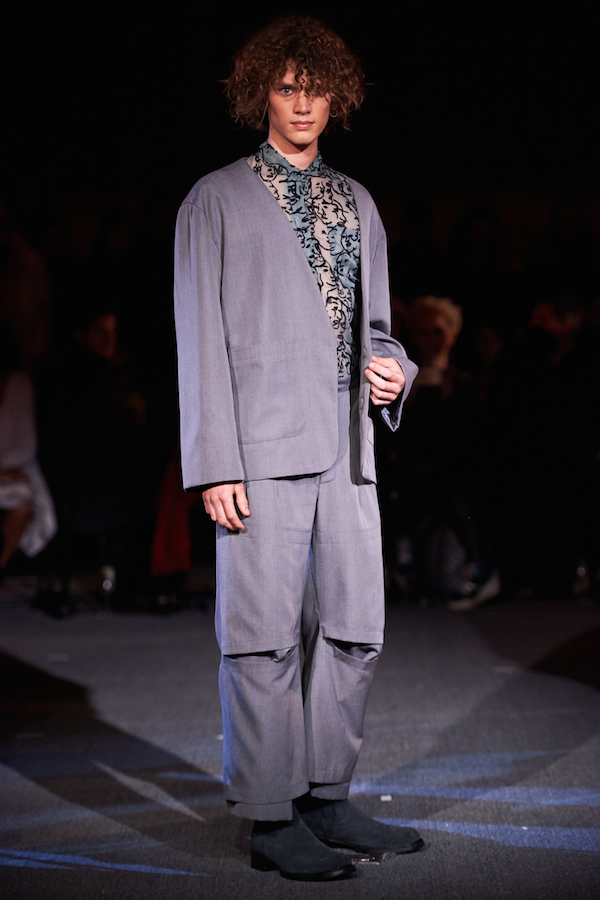
Juan Cardoza
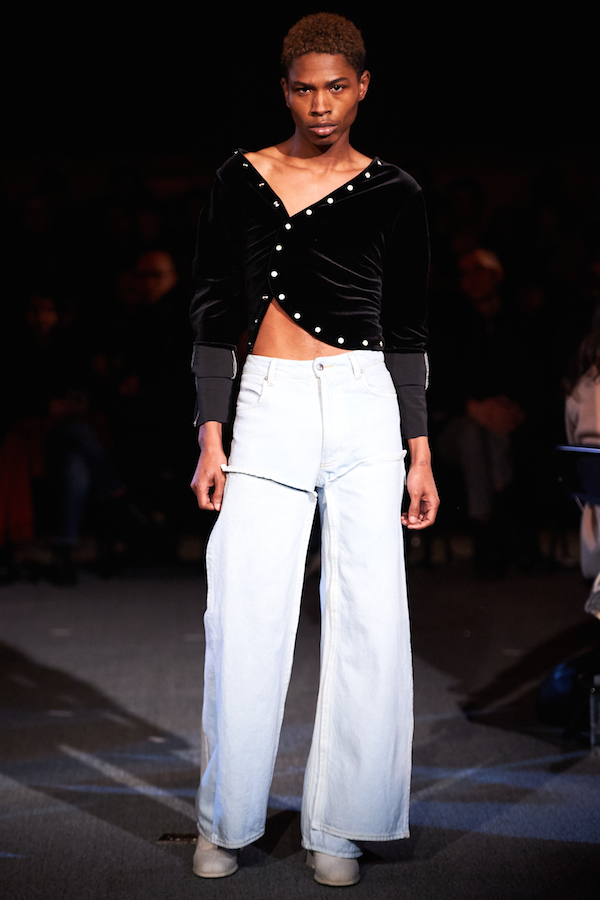
Juan Cardoza
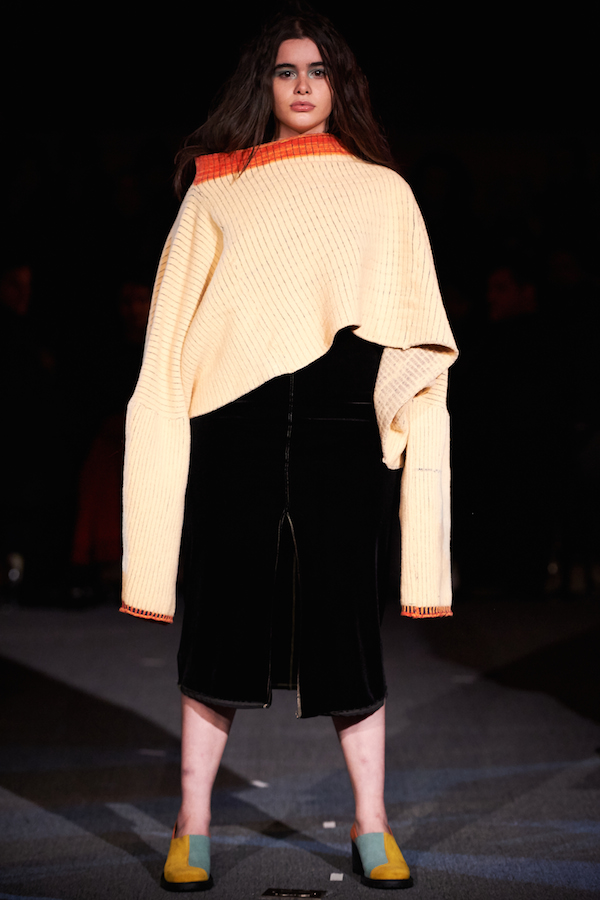
Juan Cardoza
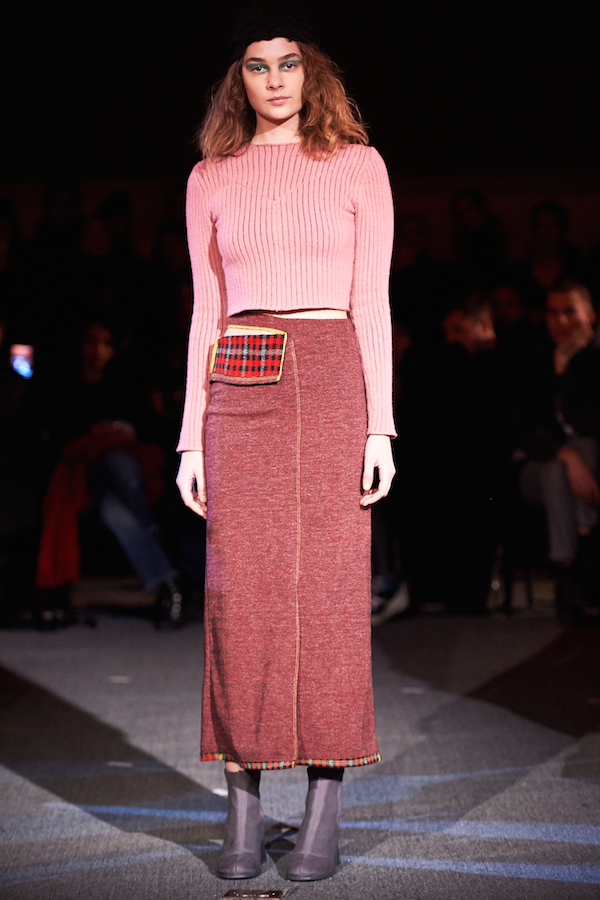
Juan Cardoza
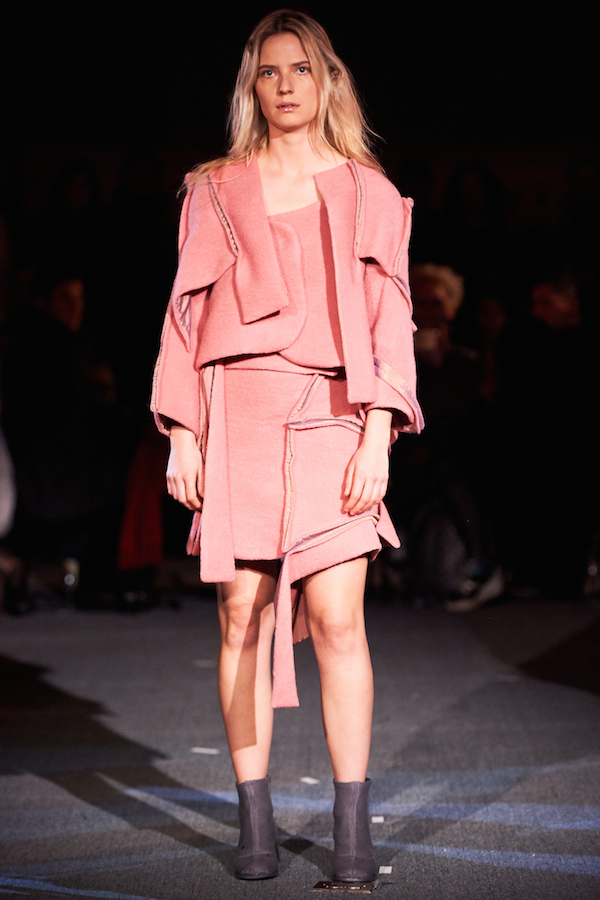
Juan Cardoza
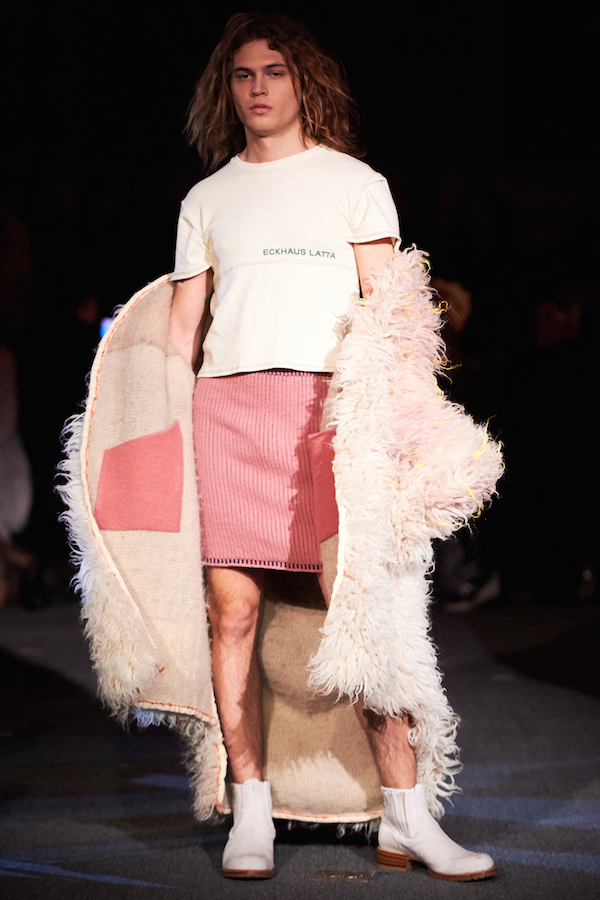
Juan Cardoza
